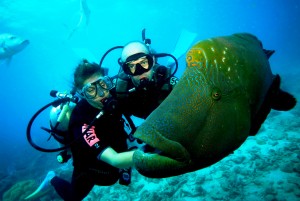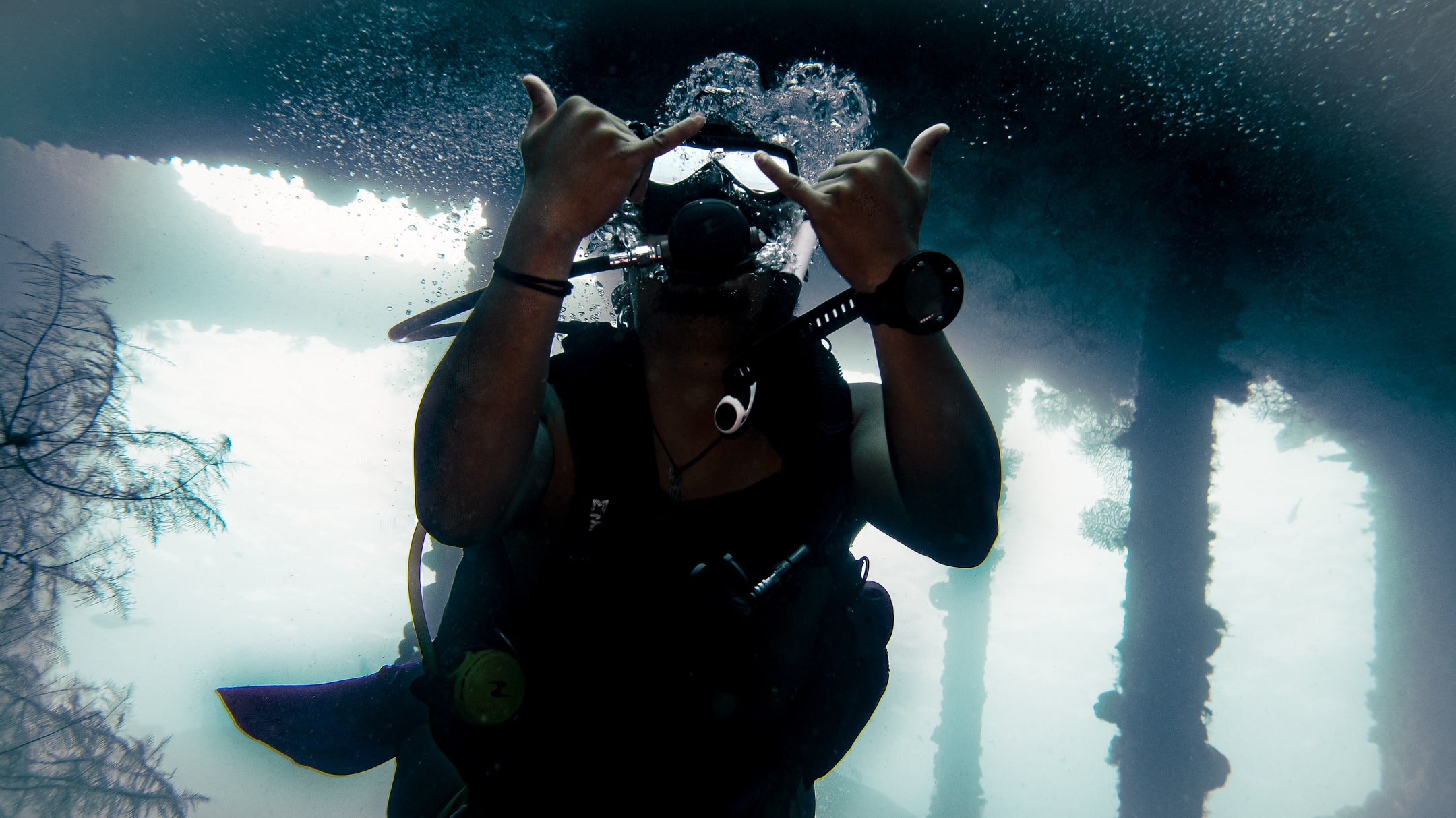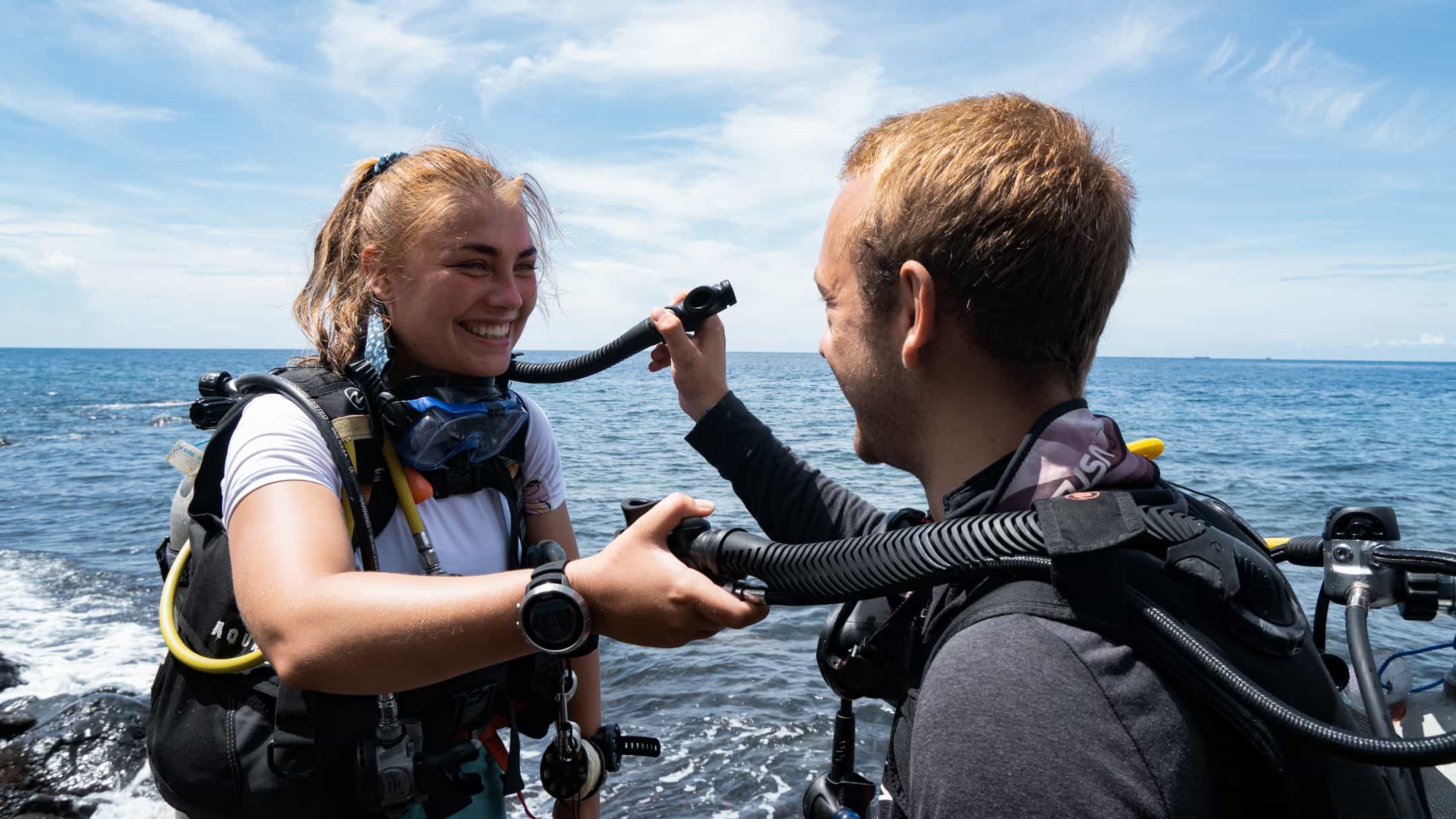There is nothing worse than diving incorrectly weighted; you either spend the whole dive adding air to your BCD or you spend the last few minutes of your dive constantly floating up – neither situation is fun, neither is safe.
Here are the steps for running through a buoyancy / weight check:
- Enter the water (fully geared up) with your BCD fully inflated.

- Once you are comfortable, breathe in and hold a normal breath.
- While you hold your breath, slowly let all of the air out of your BCD.
- If you are correctly weighted, you should float at eye level with the water. This means that you should have sunk down enough to see the water running across the middle of your mask.
What to do if you sink – if you start to sink below the water, kick up and fully inflate your BCD. Once you are comfortably floating on the surface, remove 1 weight from your weight belt or weight pocket. Hand the weight to your dive buddy and attempt steps 1-4 again. Repeat these steps until you comfortable float at eye level. Now you are perfectly weighted.
What to do if you float – if you are still floating with your head above the water, fully inflate your BCD. Once you are comfortably floating on the surface add another weight to your weight belt or weight pocket. Repeat steps 1-4 until you comfortably float at eye level.
Common mistakes and solutions for them:
- Kicking up as you let the air out of your BCD – kicking up will give you the impression that you are either floating at eye level or that you are not sinking. Just relax in the water and let your feet hang comfortably underneath you.
- Taking a giant breath in – to perform this exercise, you only need to hold a normal breath.
- Breathing out while you let the air out of your BCD – put your hand on the back of your regulator to remind yourself not to breathe out while you are doing your weight check.
- Forgetting to kick up once your head is below the surface – as soon as you see that you are sinking, kick up and inflate your BCD so that you can adjust your weights and try again.
 Remember, that as you use the air in your cylinder, you will become lighter. As such, if you perform your weight check with a full scuba cylinder, you will need to add a weight back to compensate for air used during a dive.
Remember, that as you use the air in your cylinder, you will become lighter. As such, if you perform your weight check with a full scuba cylinder, you will need to add a weight back to compensate for air used during a dive.
Also keep in mind that aluminum cylinders are much more buoyant (they float) than steel cylinders (they sink). So if you change what cylinders you are diving with, you will need to adjust your weights by performing a weight check as above.
You can refresh your dive skills, like the one above by doing a PADI Scuba Review – get in touch to book yours today.
Have we missed anything? When last did you perform a weight check when you went diving – give it a try next time and let us know if you were correctly weighted or not!



